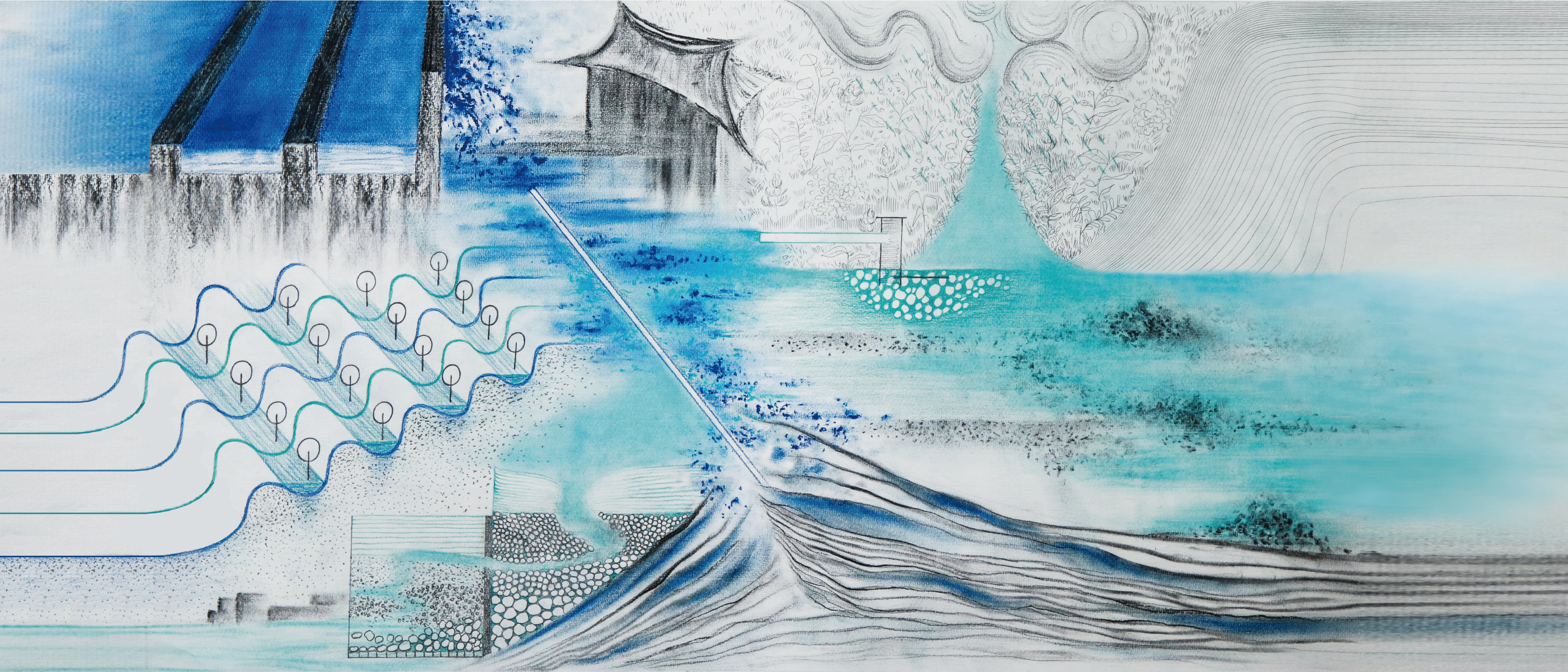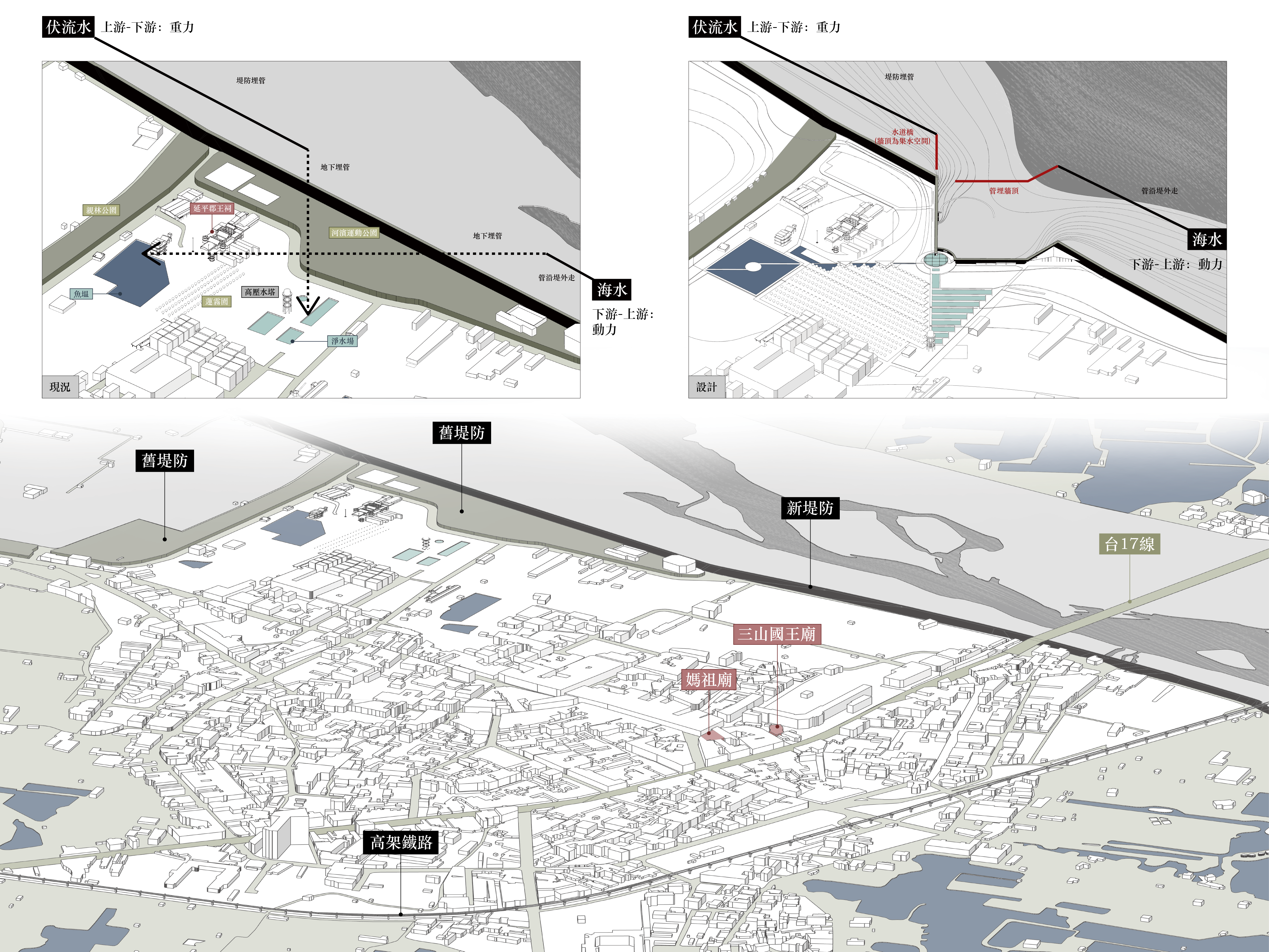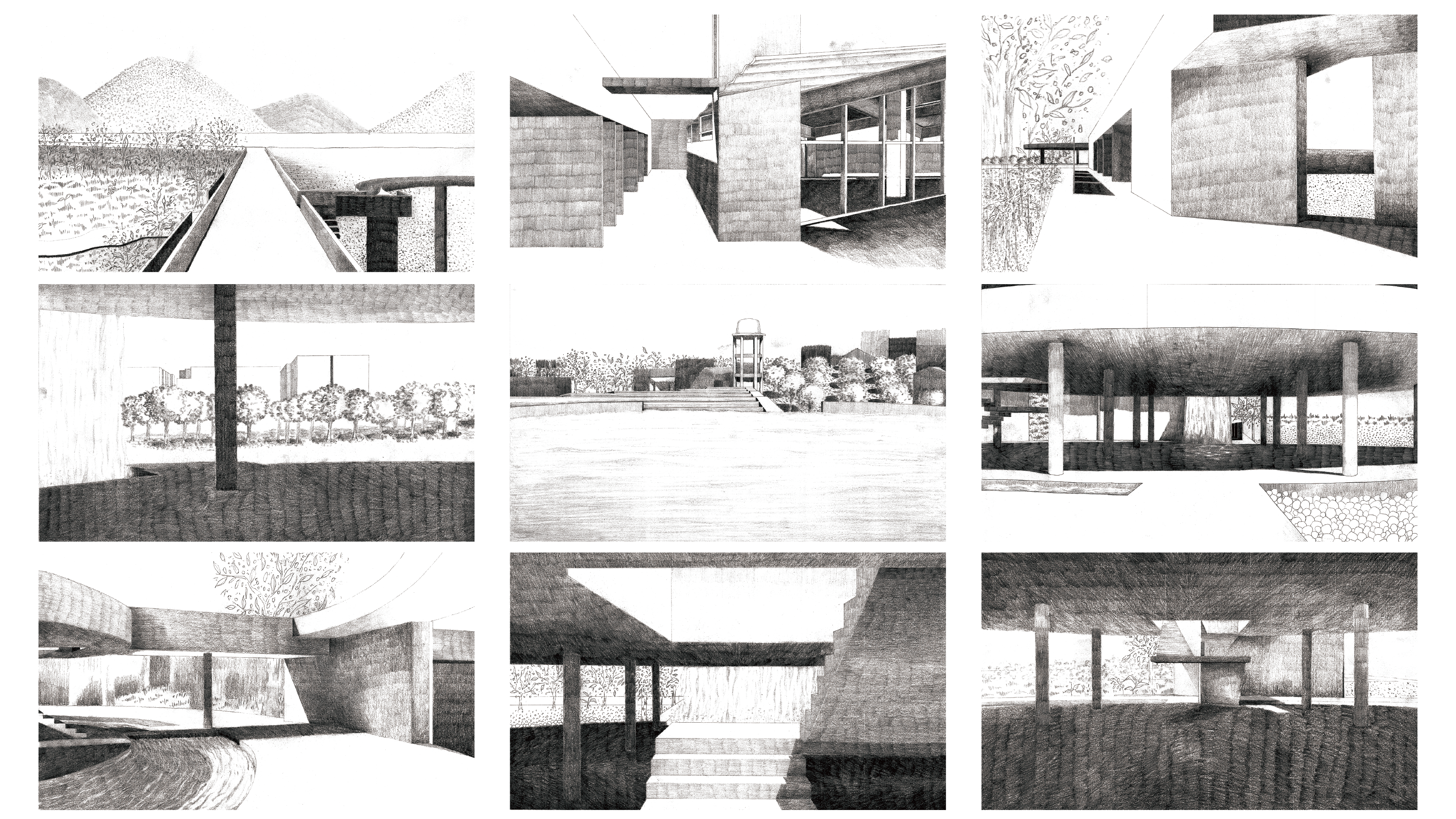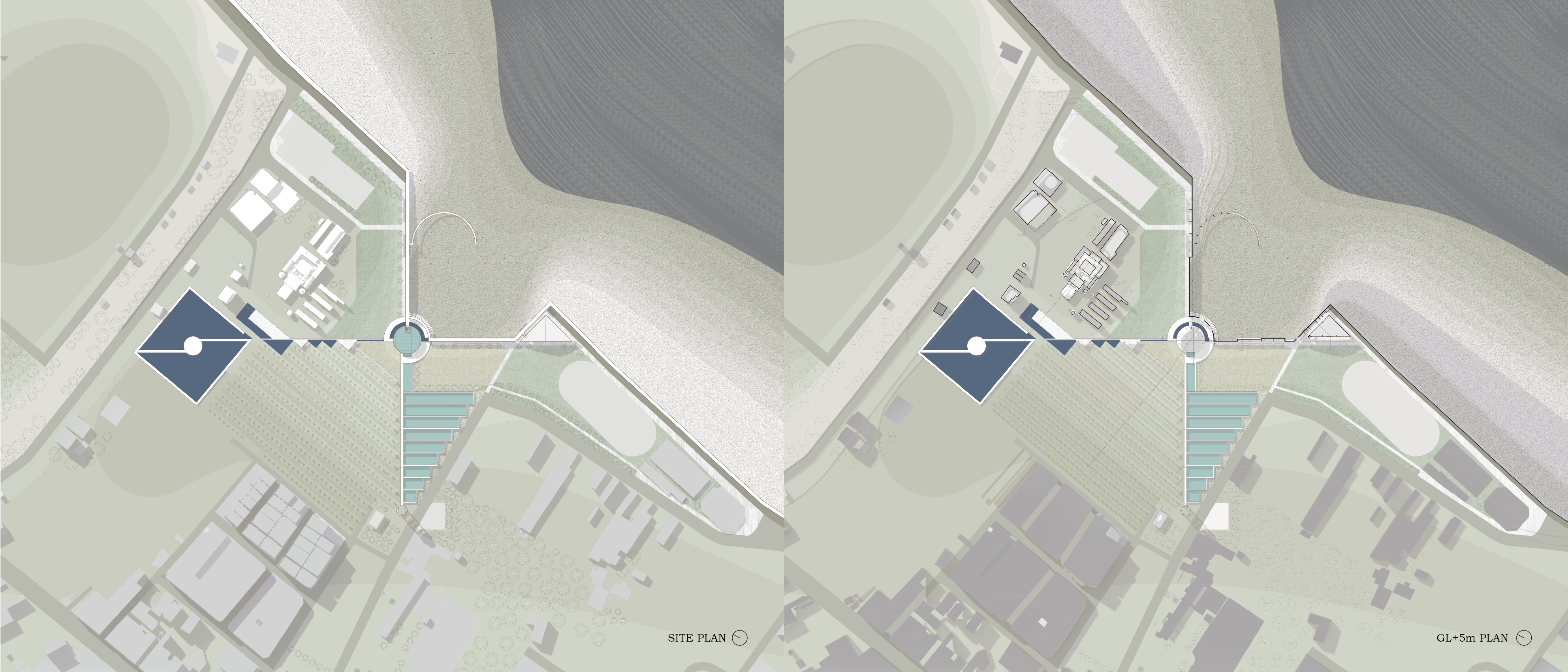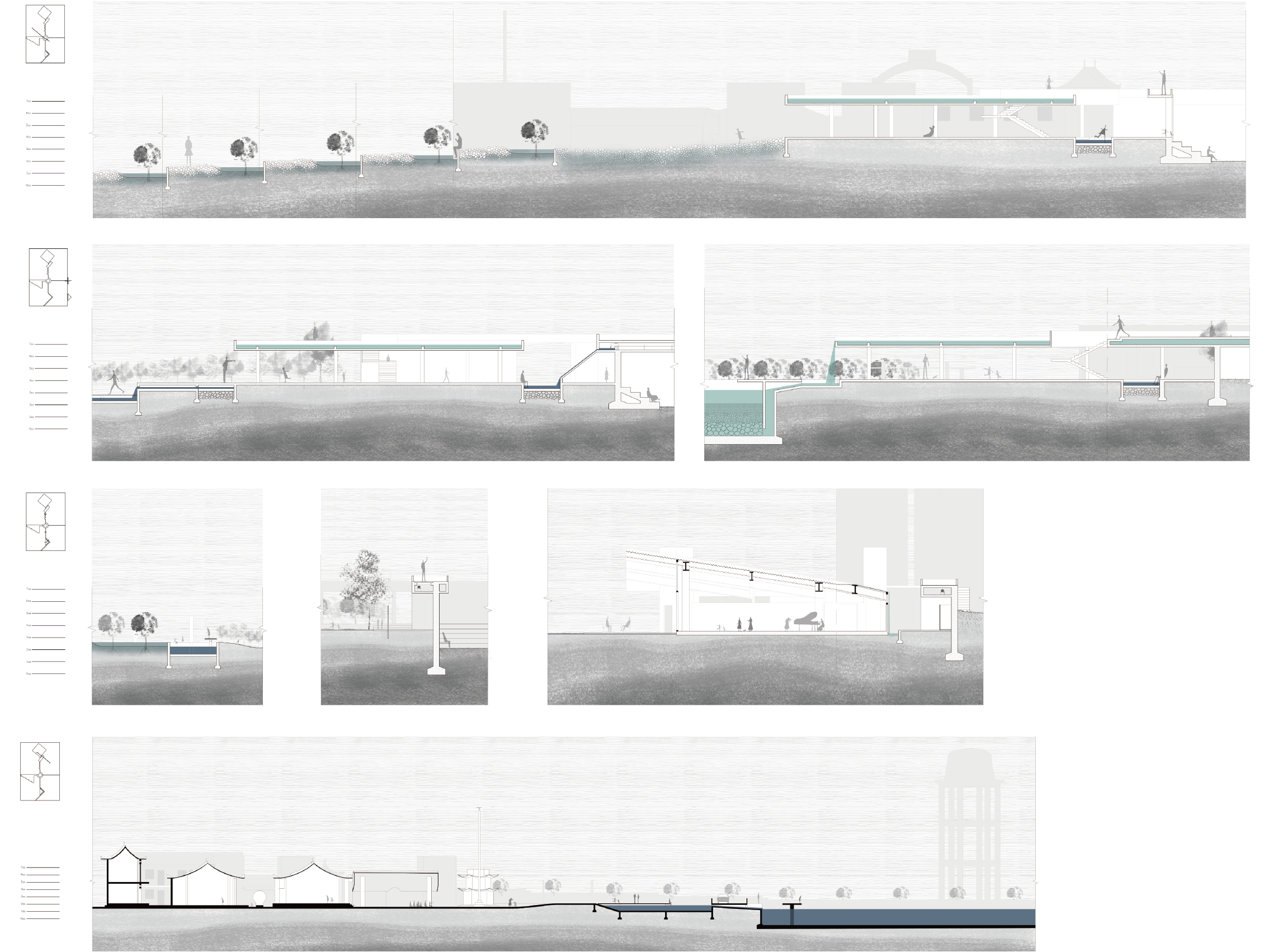信仰位移
Transcendence of Belief
曹詠行
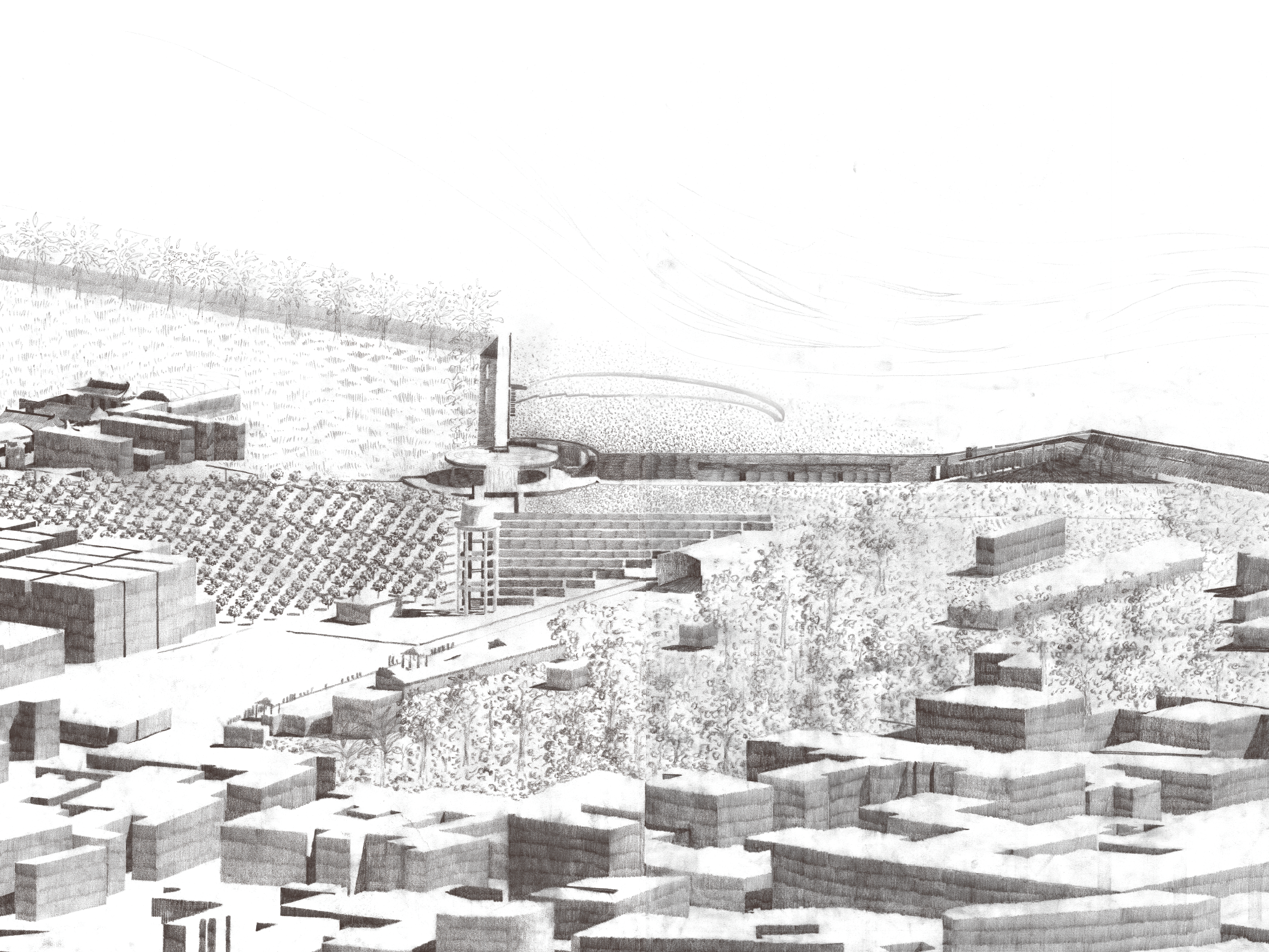

信仰隨環境變遷改變並產生新公共性的可能
設計說明
當人們對水的態度從懼怕走向親近,信仰的下一步將會是?
基地
屏東縣林邊鄉
自古以來林邊即飽受水患之苦,以前技術尚未成熟,人們便將希望寄託於神明信仰,在鄉內最主要的大廟為三山國王廟與媽祖廟。特別的是,航海守護神坐向應面向海,但這個信仰是出於對水的恐懼、希望能保護聚落免遭水淹,因此以背向海的姿態存在。廟的出現帶動周邊發展,形成一個信仰空間高度與日常生活混合的狀態。直到現今,聚落範圍由高架鐵路、新堤防及舊堤防改建後的河濱運動公園三條地勢較高的邊界大致定型。林邊溪上游到下游的治水措施及設備愈來愈完善,淹水的邊界已漸漸遠離聚落,並隨著環境變動及水的邊界位移到現在新舊堤防交界處。
當代信仰不再只侷限於求神拜佛,而是對堤防的崇敬及水的認知,這些才是改善水患的主因,我希望透過一個自然與人為相互牽制下的地景場域,以堤防與水去帶動活動發生,進而連結信仰,就如同原先的廟帶動周遭的活動並聚集產生公共性,彰顯信仰。
Site
Pingtung, Linbian
Since ancient times, Linbian has suffered from flooding, leading residents to place their hopes in deities. The main temples are the Three Mountain Kings Temple and the Mazu Temple. Unusually, Mazu Temple faces away from the sea, reflecting a desire to protect the settlement from flooding. The temples spurred local development, blending religious practices with daily life.
Today, the settlement is bordered by the elevated railway, a new dike, and a riverside sports park. Improved flood control has pushed flood boundaries away from the settlement, reducing the historical reliance on religious faith for protection. This project site, rich in natural and industrial textures, reflects the shift from divine faith to respect for dikes and water management.
Modern faith should focus on understanding and respecting water. By reconfiguring the relationship between water, land, and dikes, we can foster community gathering. This landscape will help people see, feel, and adapt to water changes, demonstrating how systems can thrive amid fluctuations. Using dikes and water to initiate activities will connect back to faith, much like how temples once spurred community engagement and highlighted belief.
